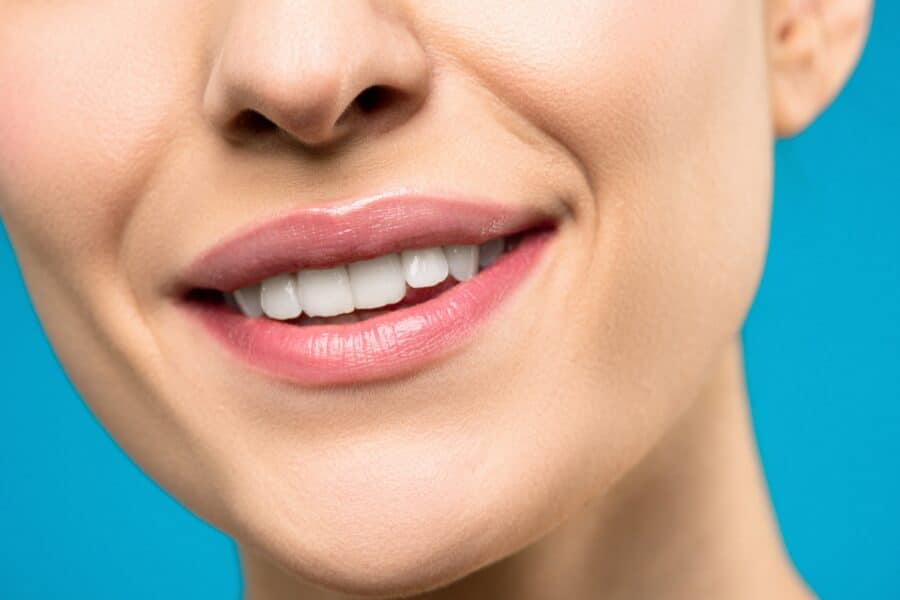Your mouth harbors hundreds of bacterial species that are either single cells that freely float within your mouth or something called biofilm, which is when bacteria encased in a slimy coating attaches to surfaces in your mouth. Everyday bacteria is forming and trying to cause problems in your mouth like tooth decay and periodontal disease.
Your own oral home care is the key to removing this potentially damaging bacteria. But the biofilm that forms in your mouth is not easily removed by brushing and flossing alone, which is why it is important that we understand biofilm and the best ways to remove it.
What is Oral Biofilm?
You may have heard the word, plaque, right? Well, plaque is the soft & sticky deposits in the mouth that contain both food particles and several bacteria species. Biofilm is basically the same bacteria that attaches to the teeth and gums but in a stronger way.
In your mouth, biofilm can form on almost any surface because of your mouth’s watery environment. Biofilm is an organized and highly variable set of microbes that can be difficult to remove, which can cause periodontal disease.
Biofilm Formation
Because biofilm is a complex cellular formation, it takes several phases to be fully formed.
The longer biofilm is left in your mouth, the more it matures and incorporates more types of bacteria, which is kind of like saying the bacteria recruits more bacteria the longer it is allowed to sit on the surfaces within your mouth.
In a sense, biofilm is an ever-growing bacterial army that, as it grows, attacks your oral tissues more and more. What is even worse is that this biofilm army is hard to remove because it is covered and protected by a slimy coating that is meant to keep you from removing it!
Why is Biofilm Dangerous?
Because biofilm contains harmful organisms that can cause periodontal disease, understanding what it is and how to remove it is not only important for your oral health but also your overall health. Connections between oral health and systemic health show that periodontal disease is the key to either creating or complicating certain health issues.
Many common health issues have been connected to oral biofilm, such as heart disease, diabetes, pulmonary disease, Alzheimer’s disease, and osteoporosis. Evidence has also linked oral biofilm that causes gum disease to certain types of cancer and pregnancy complications.
The Key to Fighting Biofilm
The problem is that the slimy coating that protects biofilm can be quite resistant to typical ways to destroy it such as antibiotics or oral antibacterial rinses. Typically, the best way to remove it is by manually disrupting that protective coating.
Fighting biofilm is a team effort between you and your dental professionals.
How Can We Manage Oral Biofilm?
Managing biofilm hinges on knowing what it is, how it forms, and how strong and resistant it becomes. Typical mechanical removal such as common removal tools like brushing and flossing only removes about 50% of biofilm while regrowth forms about every three hours.
While the tooth surface above the gum line is more easily accessed with brushing, the area under the gums and between the teeth is much more difficult to reach. That means that even the most diligent brusher is leaving harmful biofilm behind after brushing.
Proper brushing, flossing, and adding unique home care tools that are designed to reach further between the teeth and under the gums are important for removing as much biofilm as possible with daily cleaning at home.
But toothbrush bristles can only reach about 3 mm under the gums. A similar problem occurs with oral irrigators and floss. Getting to the bottom of the pockets on all teeth is technically difficult and practically impossible, which makes help from your dental professional essential in the fight against biofilm.
Your Oral Home Care
Since biofilm is something that is forming in your mouth on teeth and under your gums, you are the key to fighting it. Proper brushing twice a day helps to remove harmful bacteria while flossing and oral irrigators help to remove bacteria under the gums and in-between your teeth. In addition, manual tools such as interdental brushes can help reduce biofilm.
How Your Dental Professional Can Help
Dental professionals can help you fight bacteria in more ways than one. They can offer several ways to fight bacteria such as:
- Professional cleanings: They help to remove oral deposits that you cannot remove such as the soft and resistant biofilm and calculus, which becomes an excellent magnet for harmful bacteria.
- Periodontal assessment: They screen you for signs of gum disease and offer appropriate treatment to remove harmful bacteria that affect your health.
- Personalize homecare: They review your mouth and discuss the best homecare tools that you can use to remove as much bacteria in your mouth on a daily basis.
- Discuss dietary choices: They can discuss factors that affect biofilm beyond brushing and flossing like nutrition and oral pH because they can also affect bacterial growth.
Diet and Your Mouth
Dietary choices such as sugary foods or high-carbohydrate diets can be attractive to bacteria, which uses those sugars to produce harmful acids. Those acids cause a low pH in your mouth, which is an environment that harmful bacteria love.
Because bacteria thrive in a low-pH environment, your dental professional can help you with nutritional suggestions that will help neutralize your pH. Some suggestions may include making substitutions with health pH in mind, like drinking water with a neutral pH or higher instead of acidic sodas.
What are the Takeaways?
In your mouth, there are good and bad bacteria. The balance between them is essential. The key is finding a way to keep the most harmful bacteria under control. Unfortunately, we may not think about how their habits affect the growth of biofilm, which is loaded with harmful bacteria.
Understanding dental biofilm removal will help you achieve whole mouth health, which helps you maintain whole-body health!

